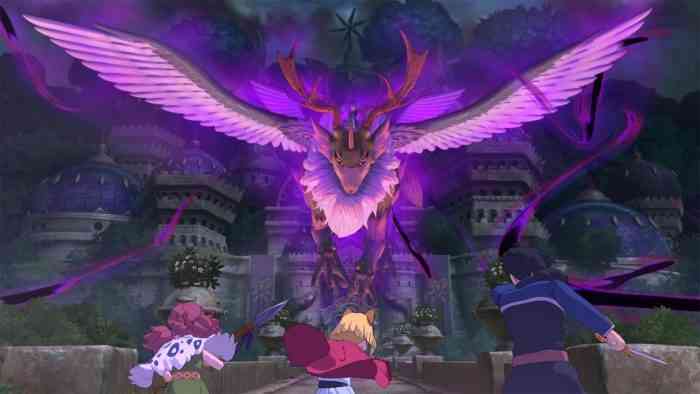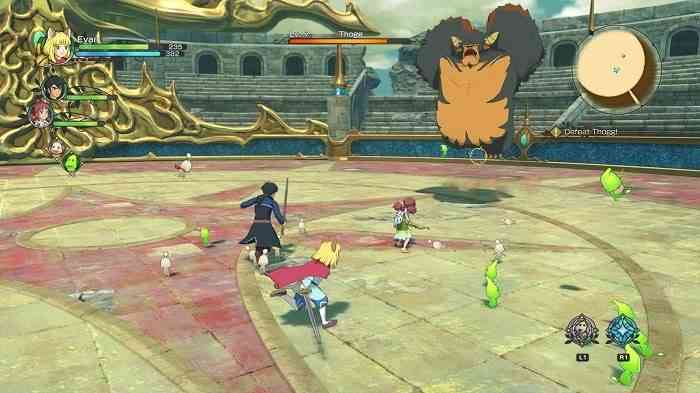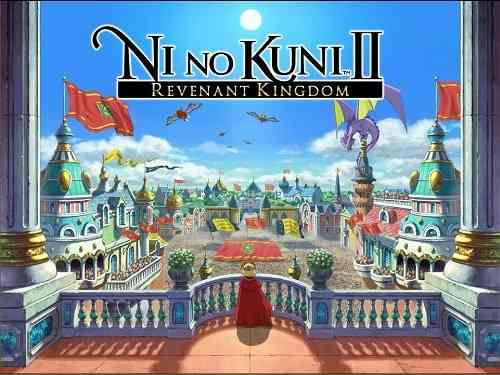Ni No Kuni II: Revenant Kingdom Review
2013 marked our first exposure to Ni No Kuni with Ni No Kuni: Wrath of the White Witch. It made some great strides for the JRPG genre by incorporating a unique combination of gameplay, art style, and overall storytelling that reached the hearts of many gamers. Now, five years later, we are presented with its sequel, Ni No Kuni II: Revenant Kingdom. Set over a hundred years after the first game, it revolves around Evan, a young king forced out of his kingdom, as well as a handful of peculiar characters that join him throughout his adventure.
The game begins as a man named Roland is mysteriously transported in the midst of a raging battle between the mouse tribe and cat tribe in the kingdom of Ding Dong Dell. Evan, the young king of the cat tribe, has yet to learn how to be king, let alone how to handle a coup d’état and so is protected, aided, and guided by Roland. After some battles, information, and running about, Evan is driven to retake his kingdom and become the king that people can look towards. With the help of Roland, Evan begins his adventure across the land encountering an abundance of expected, as well as unexpected events that bring him closer to being king once again.
For those coming in with experience from the original Ni No Kuni, I’ll say it right here and now that familiars are gone, battle mechanics have been revamped, and that Ni No Kuni II: Revenant Kingdom is quite different from its predecessor. To start things off, combat is in real time and mirrors a hack-and-slash format that puts Evan and his companions at the forefront of battles instead of commanding familiars. If you’re booing and getting angry – just hold on let me talk you through this a bit more. You go into battles with three melee weapons and one ranged weapon with your general HP, MP, light attack, heavy attack, ranged attack, guarding, and rolling.
________________________
“The visuals are absolutely phenomenal in every aspect”
There’s unique mechanics like the zing gauge for each weapon where once filled to 100%, your skills are empowered and can even change-up in style depending on the weapon currently active. Skills range from being super flashy and a bit slow, to simple and quick to execute, so whatever suits the battle at hand is yours for the taking. Thus, having weapons to switch between feeds into the zing gauge mechanic and overall flow of battles. That’s not all, however, as instead of familiars we’ve got these cute, oddball creatures called Higgledies. In simplest terms, Higgledies are like Pikmin who run around the battlefield waiting for you to trigger their special abilities. They each have different elemental attributes, as well as ability types that you can choose from to place in your party to match your play style. Some heal, attack, buff, or debuff so finding and collecting Higgledies across the land will aid you in battles and really just make you love them more.
In and out of battles, you’re able to switch between 3 characters of your choosing who act as your main party. So if you don’t like our very pretty new young king you can switch it up and play as a different character. Battles are also engaged instantaneously when in dungeons, so once an enemy is encountered you can fight them as is or choose to escape. This is opposed to the overworld when traversing to-and-from new places where you load into the battle. The battles aren’t crazy hard or highly intricate in any sort of way, but it feels good, is engaging, and quite fun. While the start may be easy, you’ll slowly find that later game enemies and bosses do require properly implementing a more structured tactic to defeat them efficiently. Switching between characters and weapons, utilizing the zing mechanic, as well as the Higgledies makes battles rewarding and allows you to play in the style you want to play. While it’s drastically different from the first game, I think it’s a welcomed change and something much more accessible, as well as engaging to a broader audience.

A system that changes the flow of battles is the Tactic Tweaker, where leveling provides points that allow you to manipulate various features related to how vulnerable, resilient, or specialized your team is to certain elements. Whether it’s fire over water, quantity over quality, or speed over power is up to your decision. This can also be changed at any time, so if early game speed is your style, but late game you favor power, you can just go right into the Tactic Tweaker and fix yourself up. I found this style of level progression straightforward, unique, and rather enjoyable. It’s not invasive in terms of forcing you to allocate certain stats or useless in terms of just really not being effective. Frankly, it’s quite cool and rather fitting.
Outside of battles, you’ll be walking around the beautifully crafted world and cities Ni No Kuni II has to offer. When walking between main cities and dungeons, you’ll enter the overworld where your party will be transformed into big-headed, small-bodied, chibi versions of themselves battling enemies, collecting items, and finding new places to explore. You can even engage in army-versus-army RTS battles if you choose to do so. Its rather fun, and quite cute with all the chibi characters rigorously fighting each other. Or, you can check out the world’s very own social media interface that provides the latest news on what’s happening called the Leafbook, fight tainted enemies that are significantly harder than regular enemies, or solve some puzzles from time to time. However, the main feature outside of battles aside from doing quests is the Kingdom Builder.

The Kingdom Builder acts as the hub for Evan and his companions as they build facilities, perform research, and house various creatures from across the land. Generally, the Kingdom Builder is like a management system where you balance your earnings between various facilities to enhance your gaming experience. Whether you want to level up your Higgledies, purchase better armor or weapons, boost the overall stats of your party, or obtain income faster is all in the palm of your hands. You’ll frequently return to the Kingdom Builder as you progress through the game, but it’s not something that feels forced in any way. Whether you want to truly focus on maximizing the potential of your kingdom early, or wait and do it late-game is completely up to you.
While Ni No Kuni II doesn’t have the direct attention from Studio Ghibli like the first game did, there is no doubt that there is still a heavy influence from it. Yoshiyuki Momose who was previously part of Studio Ghibli and worked on Porco Rosso and Spirited Away, as well as the first Ni No Kuni, returned for Ni No Kuni II bringing that Studio Ghibli magic with him. There are designs and cutscenes that totally pay homage to the works of Studio Ghibli that anybody who has watched their films will immediately recognize the unique artistry at hand. The visuals are absolutely phenomenal in every aspect, and is something you should have no fear about coming into the game. Sound-wise, the game is equally on-par with its visuals truly giving life and color to the world of Ni No Kuni. While voice acting is always a hit-or-miss sort of deal from person to person, you do have the choice between English or Japanese audio. And while the majority of the game is voiced, not everything is. Nonetheless, I found it enjoyable and absolutely adored certain characters I came across.
_______________________
“Ni No Kuni II: Revenant Kingdom is a sensational, well-crafted, and loveable game.”
Overall, Ni No Kuni II: Revenant Kingdom is a sensational, well-crafted, and loveable game. It brings the spirit of Ni No Kuni in a new form with new mechanics, characters, and storytelling that anyone can pick up, play, and rightfully enjoy. While it may fall on the more simpler and easier side of things in terms of combat and mechanics initially, don’t let that shy you away from the game as there is much more to be had the more you progress. Ni No Kuni II: Revenant Kingdom is a treat and shouldn’t be missed out on, especially if you’re in the JRPG mood.
** A PS4 code was provided by the publisher **
The Good
- Enjoyable combat and game mechanics
- Phenomenal visuals and animation
- Loveable characters, storytelling, and design
- Different from first game, but same spirit
The Bad
- Not fully voiced
- Combat and mechanics initially too easy

